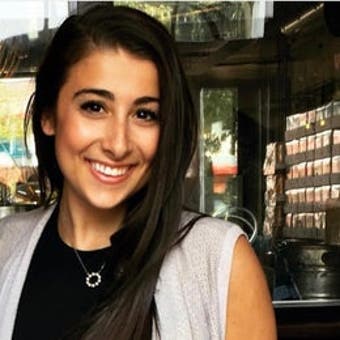NY firefighter Ray Pfeifer remembered after dying from 9/11-related cancer
Fox News' Janice Dean and Pfeifer's former colleague Robert Ostrofsky paid tribute to Pfeifer at a 9/11 memorial in Point Lookout, New York.
Joseph stood in the lobby of the World Trade Center’s north tower just minutes before 9 a.m., solemn faces milling in and out. Some were attached to other uniformed members of the Fire Department of New York. Others were the faces of some of the thousands of people who worked inside or were visiting the famous, bustling skyscraper.
He had seen something horrific happen just minutes earlier and dozens of floors up. At 8:46 a.m. on Sept. 11, 2001, Joseph – officially known as FDNY Battalion Chief Joseph Pfeifer, or simply "chief," to the firefighters – had watched from only blocks away as a plane flew directly into the north tower. He and the firefighters from Duane Street firehouse’s Engine 7 abandoned their previous call for a "possible odor of gas" and piled into the rig, headed to the scene.
"In horror and disbelief, I tried to comprehend what I had just seen. One of the tallest buildings in the world was struck by a commercial jet and on fire," Pfeifer wrote in his book, "Ordinary Heroes," which was released Tuesday.
They arrived minutes later.
'TIP OF THE SPEAR'
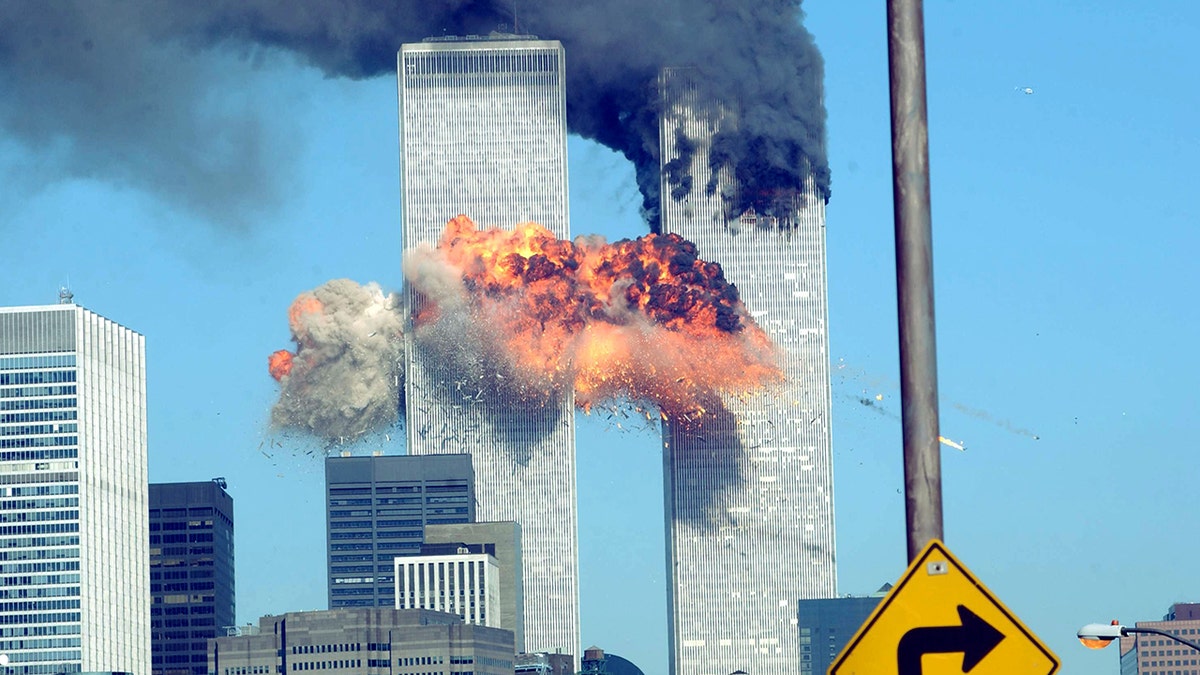
A fiery blasts rocks the World Trade Center after being hit by two planes September 11, 2001 in New York City. (Photo by Spencer Platt/Getty Images) (Spencer Platt/Getty Images)
Pfiefer was the first chief to arrive at the scene of what would become the biggest tragedy the FDNY had ever experienced.
Having worked in that area of New York City for years, Pfeifer knew the World Trade Center complex well and had conducted training sessions on some of the highest floors after the bombing attack of 1993. But they had been training for a different beast. On that Tuesday morning, response efforts were stymied by a lack of functioning elevators and trouble communicating over the radio.
As the first chief on scene, he had the mighty task of taking command.
"I had to devise a plan on what to do. And the plan was to evacuate the building, and then rescue those that couldn’t get out," Pfeifer told Fox News. "And then I had to give those orders to the fire officers, captains and lieutenants and battalion chiefs that came in, and the firefighters."
"I was, along with the first surviving units, we were literally at the tip of the spear," Pfeifer continued.
And he was far from alone. In addition to the hundreds of firefighters who would soon be piling in to evacuate people from the upper floors, Pfeifer was joined by Jules Gaudet, one of a pair of documentarians who had been shadowing him for a story on probationary firefighters.
Mere minutes had passed when Pfeifer saw another familiar face – his brother, Kevin, and an FDNY lieutenant who was supposed to be off that day to study for an upcoming promotion exam.
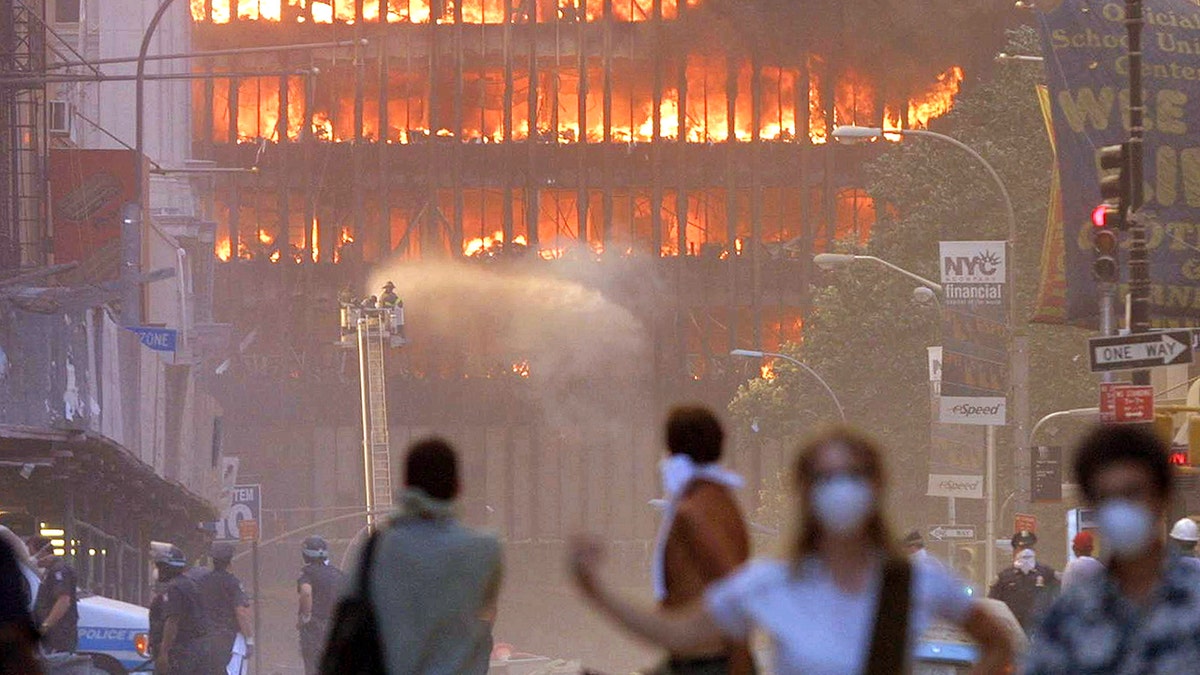
People walk in the street in the area where the World Trade Center buildings collapsed September 11, 2001 after two airplanes slammed into the twin towers in a suspected terrorist attack. (Mario Tama/Getty Images)
Kevin approached his brother and they looked at each other without saying a word. After receiving orders from his older brother – "go up the B stairs and to the 70th floor and evacuate occupants along the way" – Kevin turned around and began the treacherous journey.
"When we looked at each other, we both wondered if we were each going to be OK," Chief Pfeifer recalled. "And he slowly turned around and took his brother firefighters into the narrow stairs of the World Trade Center and started walking up."
It was the last time Pfeifer saw his baby brother for months.
Twenty years later, it’s not difficult for many to recall what happened next, but it is painful. Thousands of civilians spilled out of the north tower, and then the south tower, while first responders – firefighters, other FDNY personnel, and brave faces from the New York Police Department, the Port Authority of New York and New Jersey, transit police and countless others – hauled sometimes more than 60 pounds of gear as they went in the opposite direction, into and up the burning building to save as many as they could.
At 9:03 a.m., a different plane crashed into the south tower. At 9:37 a.m., a third plane crashed into the Pentagon in Washington, D.C. At 10:07 a.m., a fourth plane crashes in a grassy area in Pennsylvania.
The World Trade Center’s south tower collapsed first, at 9:59 a.m., as Pfeifer, still in the lobby of the north tower, heard "a strange rumbling sound." The ominous rumbling was following by silence and "blackness," he wrote. But they knew nothing of the tower’s collapse.
9/11 FIRST RESPONDERS REFLECT AFTER 20 YEARS
Nonetheless, Pfeifer did something unheard of for the FDNY: He ordered all units to evacuate the building.
The north tower collapsed next.
"The nightmare had unfolded in just 102 minutes, from the airplane hitting the north tower at 8:46 a.m., to its collapse at 10:28 a.m.," Pfeifer wrote.
The terrorist attacks of Sept. 11, 2001, claimed the lives of 2,977 victims, including 343 FDNY firefighters, 23 members of the NYPD, and 37 Port Authority police officers.
PRESIDENT BIDEN TO DECLASSIFY 9/11 DOCUMENTS
Pfeifer was among the emergency workers who stayed for hours at the unrecognizable scene. As day turned to night, his mind was flooded with questions: "Where’s Kevin? What do I, as a battalion chief, do now in this unthinkable disaster?"
"As I walked, an eerie gray dust cloud hung over Lower Manhattan," Pfeifer wrote. "I saw no one on the streets except other firefighters or police officers, moving like ghosts in the night. On the worst day of my life, I was profoundly alone."
The fiery remnants of the World Trade Center complex burned for months as surviving first responders worked tireless to be reunited with their fallen comrades, and ultimately do their best to rebuild any semblance of what they had lost.
Surviving first responders spent months at the scene, which became known as "the Pile," "the Pit," or "Ground Zero," first treating the job as a rescue mission before transitioning to recovery.
All 55 firefighters and officers from Pfeifer's firehouse on Duane Street miraculously survived that attacks, but each would come to learn of others who had not.
BRINGING KEVIN HOME
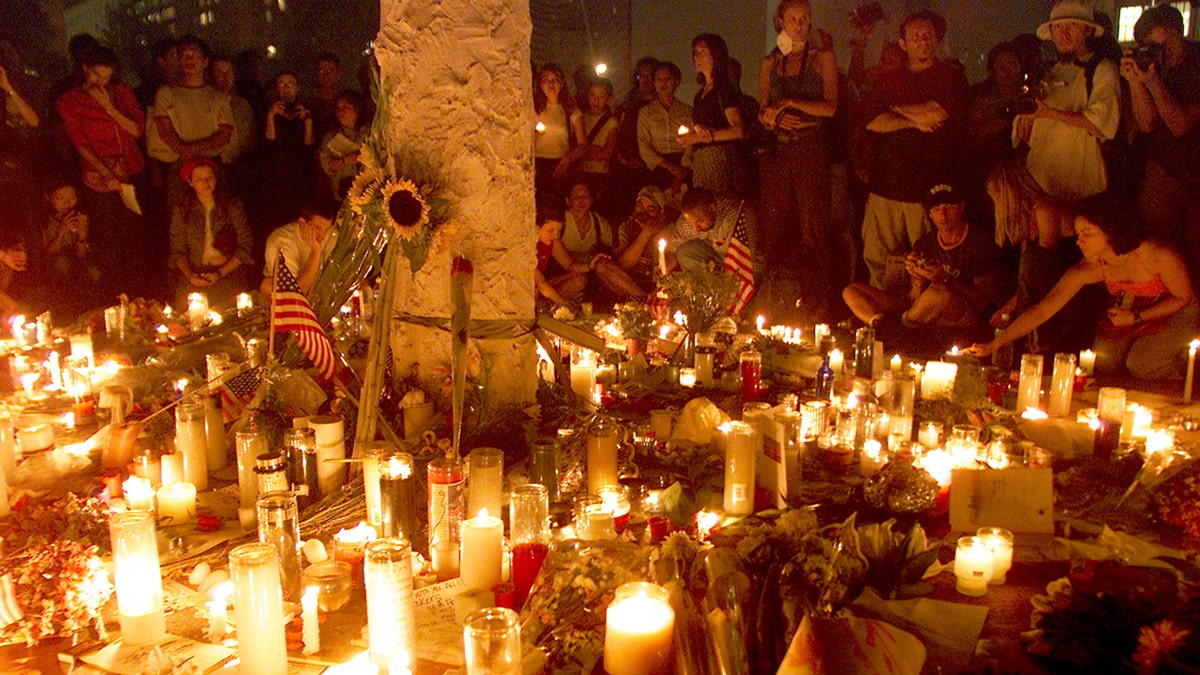
Candlelight vigil for the victims of the World Trade Center terrorist attack at Union Square in New York City. 9/13/2001. (Evan Agostini/ImageDirect/Getty Images)
September had come and gone and nearly five months passed before Pfeifer was reunited with his brother.
Not long after the attack, an FDNY captain told Pfeifer he had seen Kevin several floors up inside the north tower after everyone had been ordered to evacuate. Kevin and the other firefighters from Engine 33 had stopped on the ninth floor to redirect firefighters to a safer route, Pfeifer learned.
"Your brother saved my life. He saved a lot of lives," the captain told Pfeifer, according to the book.
In addition to his own memory of encountering Kevin on 9/11, Pfeifer was, and still is, able to watch his brother in footage from that day. The pair of documentarians who had been capturing video on the day of the attack had spotted and recorded Kevin.
Just weeks after the attack, Jules Gaudet showed Pfeifer the footage of his brother "leading Engine 33 up the stairwell," he wrote. It "was a very special moment to have on film."
Speaking to Fox News, Pfeifer called seeing the video "almost surreal."
On Feb. 3, 2002 – 145 days after September 11 – Pfeifer got the call that his brother’s remains had been found.
Pfeifer was called to the 16-acre site and slowly approached a stretcher covered by an American flag. "Kevin had been found in the area of the north tower, wearing his turnout coat emblazoned with his last name on the back. No doubt about his identity," Pfeifer wrote.
"Silence covered the Pile as we bent down to grasp the stretcher," he continued. "I was at the head of the stretcher on the right, leading my brother home."
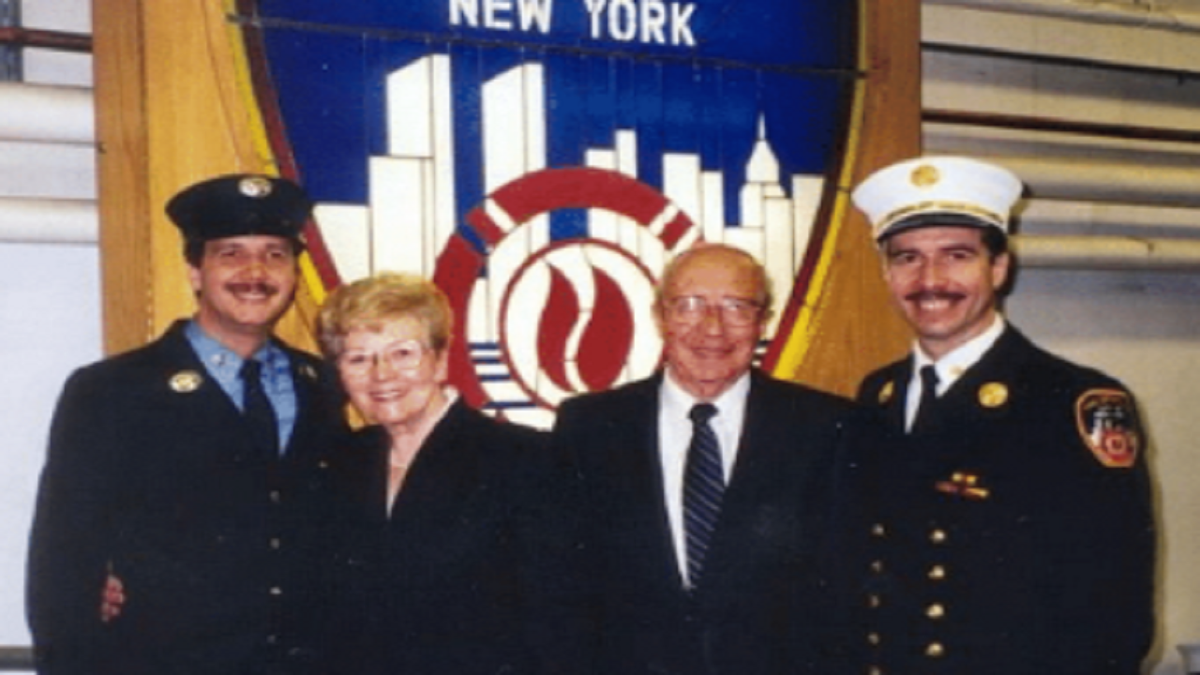
Photograph shows FDNY Battalion Chief Joseph Pfeifer (far right) with his brother, Kevin Pfeifer (far left), celebrating Kevin's promotion to FDNY lieutenant with their parents in 1999. (Photo courtesy of FDNY Chief Joseph Pfeifer)
Kevin was an avid boater who treasured his sailboat. He would take large chunks of summer off from work to enjoy time with his family or on the boat with his niece and nephew.
The Pfeifers had held a memorial service for Kevin before they had been reunited with him. One week after Kevin was located, the family had a proper service.
Nearly 20 years since the attack, and more than 19 years since Kevin’s remains were located, Pfeifer told Fox News his family still has his brother’s boat: Pfeifer’s son keeps the 18-foot Hobie Cat sailboat at his own home.
ORDINARY HEROES
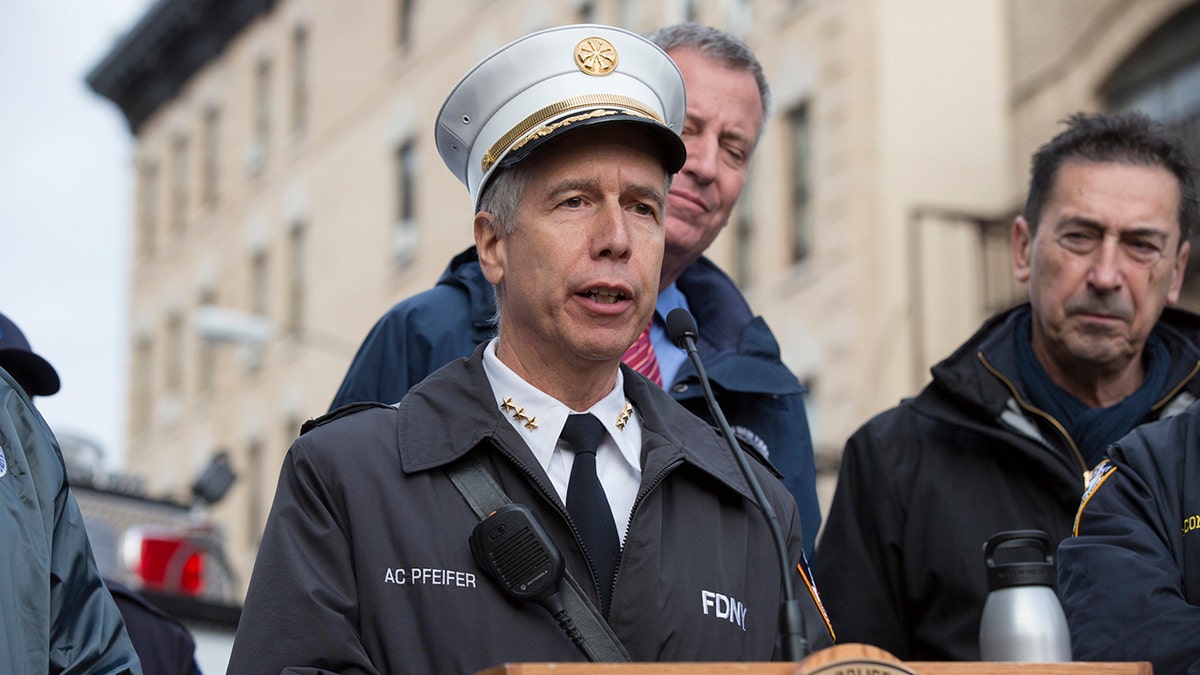
New York City Fire Department Chief of Counterterrorism and Emergency Preparedness Joseph Pfeifer speaks at a press conference following an active shooter drill on Kenmare St. on November 22, 2015 in New York City. (Michael Graae/Getty Images)
When asked about the title, "Ordinary Heroes," Pfeifer recalled an encounter with a group of teenagers who had come to pay their respects in March 2002.
"I thought you were taller," he recalled one girl telling him, as he laughed. "But I think she was saying, well, she realized that she had this image of superheroes. And when she talked to me and the other firefighters, she realized we were just ordinary."
Speaking to Fox News, he explained: "I think that's important because her view of heroes as being ordinary, allowed her to envision herself as someday being that ordinary hero that can make a difference."
Pfeifer, much like the ordinary heroes he spoke of with admiration, is undoubtedly one himself. After leading the coordination efforts at Ground Zero in the months following the attacks, Pfeifer founded the FDNY’s Center for Terrorism and Disaster Preparedness.
He worked with other law enforcement agencies at all levels to ensure all departments would be more prepared for future attacks. He also went on to spearhead even more emergency missions, including that in response to Hurricane Sandy in 2012.
Pfeifer retired from the FDNY as an assistant chief in 2018 and is now working with Columbia and Harvard universities and West Point.
CLICK HERE TO GET THE FOX NEWS APP
He returns to the site of the World Trade Center every year for the anniversary, when he allows himself – if even for the day – to remember the heavy thoughts, the hard memories that he holds "deep in [his] heart."
"It becomes just a special moment for me where I take all those thoughts … and think about that day," he said. "And at the end of the day, I put those thoughts back in my heart."
Fox News' Andrew Murray contributed to this report.
